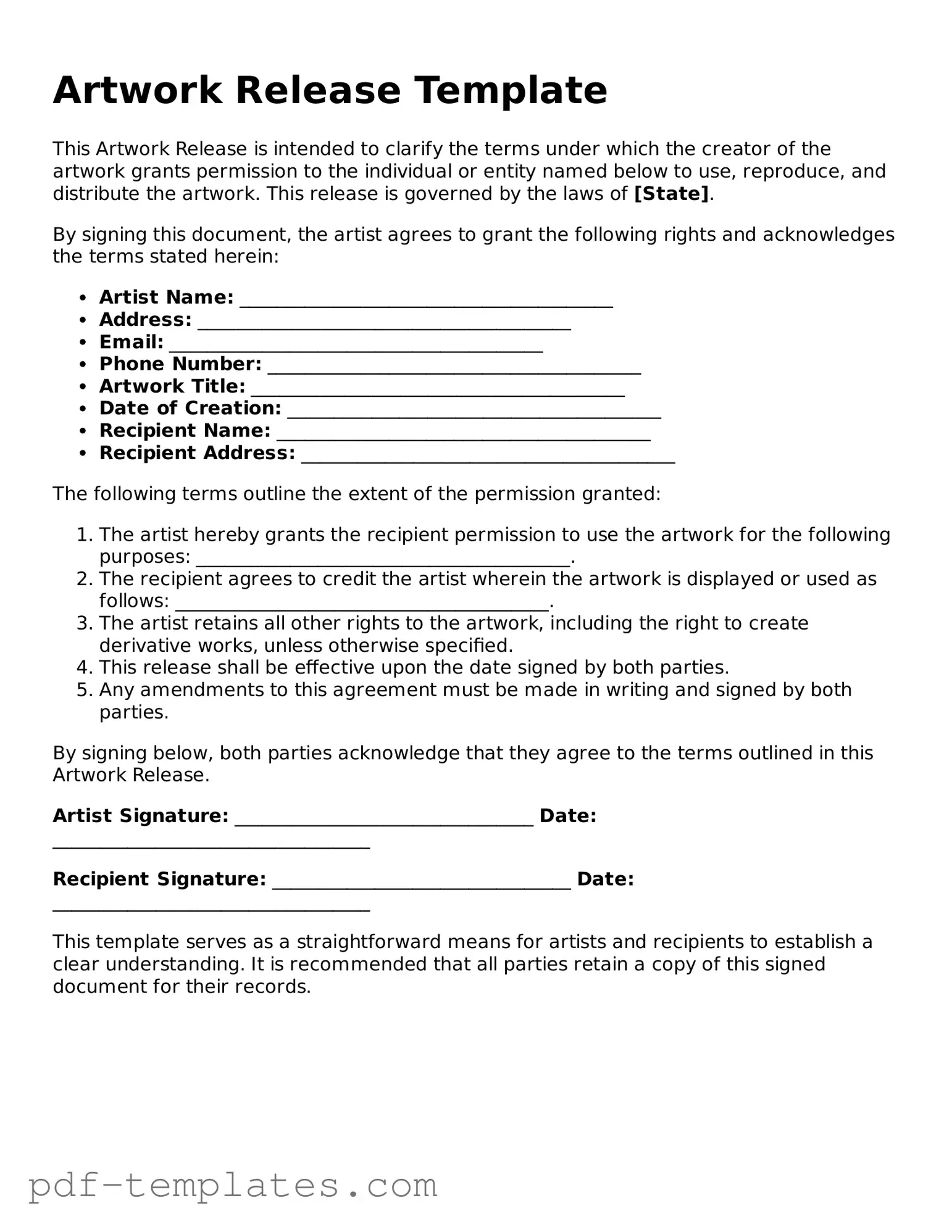When it comes to sharing and showcasing creative works, the Artwork Release form plays a crucial role in ensuring that artists and creators maintain control over their intellectual property while allowing others to use their artwork. This form serves as a legal agreement between the artist and the individual or organization seeking permission to use the artwork, whether for promotional purposes, reproduction, or display. Key aspects of the form include the scope of usage, duration of the agreement, and any compensation involved. Additionally, it addresses the rights of both parties, ensuring that the artist is credited appropriately and that their work is not altered without permission. By clearly outlining these terms, the Artwork Release form protects the interests of the artist while facilitating collaboration and creativity in various projects. Understanding this form is essential for anyone involved in the arts, as it helps prevent misunderstandings and legal disputes down the line.
